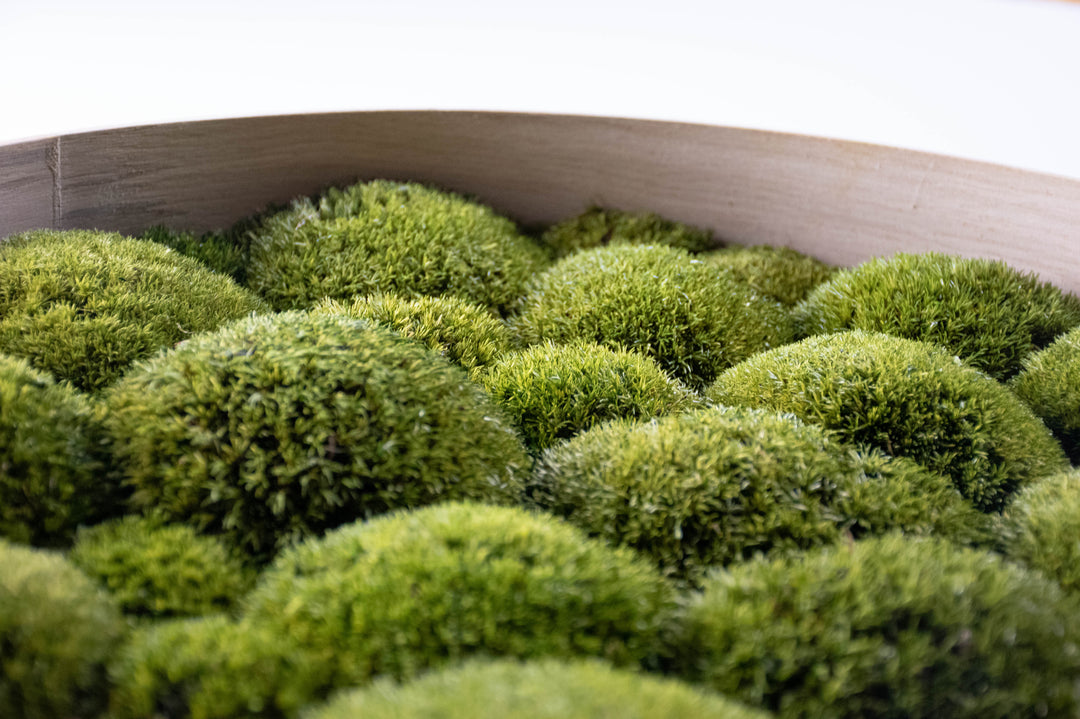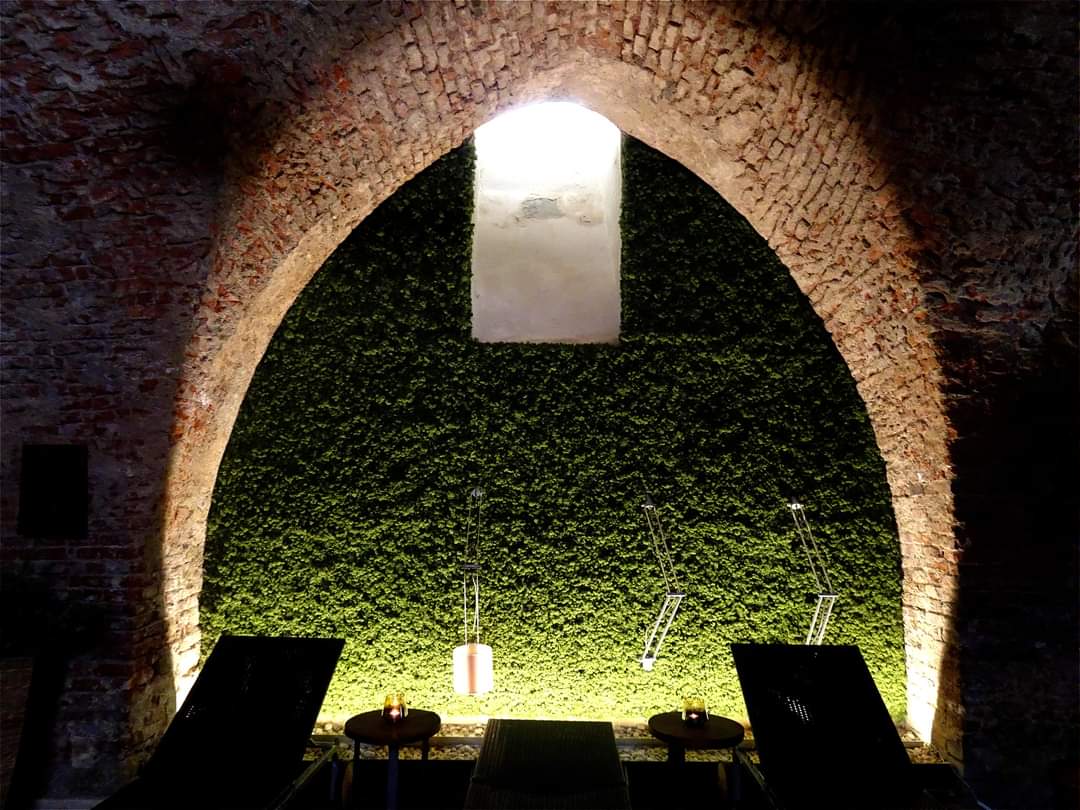A short presentation of decorative moss and some ideas about its use.
Deer lichen or decorative moss is an indispensable design element that initially found its place as a design element in Scandinavian design. Its usefulness was first recognized by the distant ancestors of these inhabitants in the old age, who treated their health problems with lichen and used it as filling and insulating material in the construction of their dwellings, and to a lesser extent also for decorative purposes.
What exactly is decorative moss?
Decorative moss is the trade name for deer lichen, in English it is found under the name reindeer moss, Swedish renlav, Norwegian kvitkrull. Several species and subspecies from the genus Cladonia are used for decorative purposes, most often Cladonia stellaris and C. rangiferina. In the following, the terms moss and decorative moss are used. The natural color of this moss is slightly greenish white to white, and it grows tightly together in large patches, like a carpet.
Most of the moss used for decorative purposes today grows near the Arctic Circle in the northern latitudes of Eurasia and North America.
The moss we use in our company is of the highest quality, it comes from Norway and is hand-picked and prepared in accordance with strict nature conservation and health standards ( ISO 14001 (2004), ISO 9001 (2008) . The preparation process achieves the desired stiffness or the flexibility of the moss, the moss can be disinfected and cleaned, and dyed as desired.The colors are water-based in order to protect health, and there are several different color shades available, covering almost the entire color palette from green, blue, brown, red, orange, black...
The use of natural materials in our rooms has a positive effect on our well-being, and decorative moss has some exceptional properties:
- Its growth/texture makes it an excellent soundproofing material.
- Due to its porosity, it is able to regulate the humidity in the room and also acts as a humidity indicator and prevents excessive humidity in the room; when the humidity in the room falls below 35%, the moss becomes hard, because the "dry" environment also draws moisture from it, but when it increases, the moss softens again and gives you an idea of the humidity in the room.
- Moss is a non-combustible material, which was also reported by SINTEF (Norwegian Pyrotechnic Society, NS-EN ISO 11925-2 (2010).
- Because of its shape, which imitates miniature trees, it affects us similarly to a forest - it stimulates cognitive abilities.
- Moss is hypoallergenic (reduces the risk of allergic reactions).
- Since it is prepared with it, there is no additional work, it does not need watering, it does not need nutrients, it does not need special care.
- It does not lose its appeal over time.
The only factor that can have a negative effect on moss is strong, direct and long-term exposure to the sun, which can make it hard to the touch, and later brittle. This can be easily avoided by shading or moistening the moss. The durability of moss and especially its color is also affected by water. Since the colors used to dye the moss are water-based, longer and greater exposure to water can discolor them. There is no need to water the moss.
Sound insulation properties:
High response time (reverb) is the most common acoustic problem faced by interior designers and architects today. Modern architecture favors rectangular spaces and hard, flat surfaces, which can cause excessive responses and irritating reverberations. They have proven their positive properties several times ( Lund University, faculty of Engineering (LTH), Norway), and we also offer a highly efficient sound absorber that has twice the capacity to absorb unwanted sound effects than the industry average for products of the same size and thickness . Among the advantages are the ideal natural cellular structure of the moss, its internal diffuse growth and the convex shape of the element itself, which allows better absorption from several angles. It can be argued that moss is among the best sound insulators.

Figure 1: The graph shows the amount of absorbed negative sound elements; the dark green curve represents a 0.5 m 2 sheet of moss, and the gray curve an average industrially made sheet of the same area. Source: Nordgröna, Norway.
What about the shape and size of the installations? Are there any restrictions?
You have almost completely free hands in your selection. There are many of the above-mentioned color shades, more than 30, and we can supply and incorporate them into the design. Also, the freedom is exceptional as far as shapes are concerned. We are by no means limited to just rectangular and square shapes, we can make different shapes, curves, cutouts, a combination of several types... We have to remind you of something else, especially in connection with sound insulation. Convex (convex) shapes are used to prevent sound reflection and other unwanted side effects in sound distribution. If desired, we can make convex structures or other 3D relief shapes.
Some hints:
Since the use of deer lichen is an increasingly popular decorative element in modern design, below we present some of the most original compositions....

Picture 2: The picture above clearly shows the use of relief to achieve the impression of depth. Source: Freund Moos Manufaktur.

Figure 3: The photo above shows the perfect composition achieved when moss is placed in modern architecture filled with rustic furniture. The size of the green wall has a calming effect. Source: Freund Moos Manufaktur.

Picture 4: Decorative moss also goes well with modern furniture. When you decide for something original and special, moss is the best choice for you. Source: Gaja Decor.
Smaller wall decor made of moss, which can be made in absolutely any shape, size and color, is also extremely interesting.
Make moss wall decor your favorite decoration.







Leave a comment